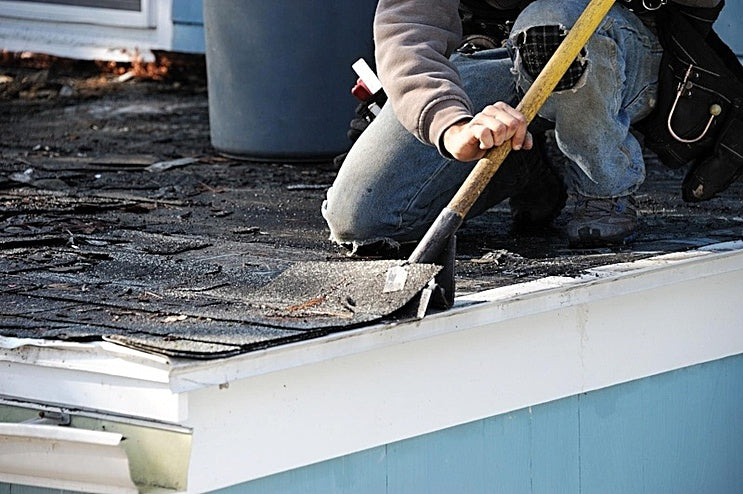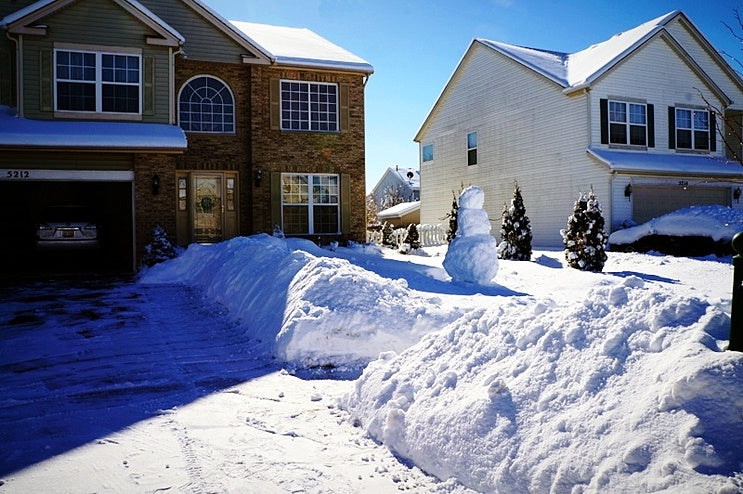Rock salt's ability to damage driveways and other outdoor pavements is relatively well known, but there is another place where rock salt can do damage to your home — on the roof top.
Why You Shouldn't Use Rock Salt on Your Roof
In their determination to melt away ice dams growing on their roof's eave, and thus, potentially prevent leakage and damage to their home's interior, many reach for the deicer they are most familiar with (rock salt) as the solution.
However, there are a number of reasons why rock salt is not a good way to cure ice dams, including these:
-
It is ineffective: Rock salt will only melt ice down to 20° F (-6.67° C), so it will only work at all on "warmer below-freezing days" in the narrow range of 20 to 32° F (-6.67 to 0° C). Furthermore, the typical ice dam along an eave contains hundreds of gallons of frozen water and would require too many pounds of rock salt to melt it to be truly practical.
-
It rusts nail heads: Rock salt doesn't hurt asphalt shingles much, but it can cause the nails holding your shingles to the roof to corrode. These rust spots can spread to make "stains," but more importantly, your shingles will be vulnerable to being torn off in the next major wind storm or even falling off on their own.
-
It rusts other parts of the building: Rock salt scattered along your roof edges won't simply stay there. It will wash over the eaves and potentially corrode aluminum siding and galvanized gutters/downspouts.
-
It can travel to garden beds: Once rock salt mixes with water and runs down your downspouts, it can reach garden beds and "poison" the soil. Many plants are sensitive to salt exposure and could lose leaves and branches or even perish as a result of "rock salt run-off."
-
It can damage masonry: Rock salt mixed with water may also run over the roof edge and onto stone or brick masonry. Salt then gets in through the porous surfaces and accelerates freeze-thaw damage in much the same way as with concrete/asphalt driveways.
How to Remove Ice Dams Without Using Rock Salt
First of all, do not use table salt as a rock salt substitute, for it has the exact same chemical composition (though smaller salt crystals). Also, it is very risky to chip away at an ice dam with a hammer, ice pick, or shovel. This will likely damage your shingles, which are already brittle from the cold.
However, you can use a long-handled roof rake to clear snow from off your eaves to prevent ice formation. You can also better insulate and ventilate your attic to reduce the ice dam effect or even just lower the temperature on your thermostat.
In extreme cases, it may be advisable to hire a professional roofer to steam-melt the ice dam, though this can be expensive. If you want to use a deicer, however, the best choice is calcium chloride. Calcium chloride works down to -25° F (-31.67° C), melts ice faster than rock salt, and is less damaging to your property.
But instead of scattering the calcium chloride all over the ice dam, just target a channel across the dam in places where you can control the run-off in a safe way. Also, remove the snow line just above the ice dam to prevent it from growing any larger. As you isolate and cut up the ice dam, the bond between the ice and roof shingles will be weakened until it is safe to use hand tools to manually remove the remaining ice.
Rock salt may seem like an easy solution to ice dam problems, but it is actually a poor solution that causes more problems than it solves. Preventative and removal methods not involving rock salt work much better and do not damage your roof.


